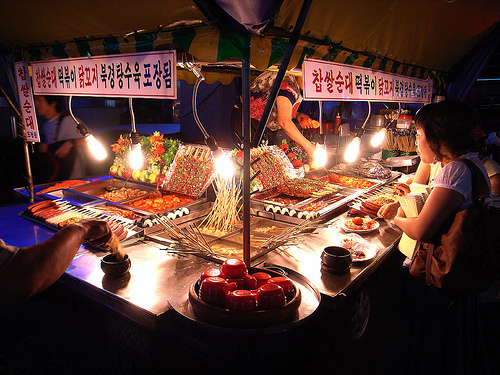Facts About Pojangmacha
Pojangmacha, a cherished fixture in South Korea, refers to the small, tented street stalls where one can savor some of the country's most beloved street foods and beverages. Think hotteok, gimbap, tteokbokki, sundae, dakkochi, odeng, mandu, and anju. These stalls are particularly popular for late-night snacks and drinks, offering quick bites for those on the move or for takeaway. Some even provide seating, making them an ideal spot for enjoying soju into the early hours of the morning.
Back in 2012, Seoul boasted around 3,100 Pojangmacha. However, their numbers have dwindled as city officials have been shutting them down, labeling them as unsightly, illegal, and unsanitary. Despite this, areas like Jongno remain iconic for their Pojangmacha, and markets such as Gwangjang and Namdaemun continue to offer superb food options. Some of these street stalls have even modernized, offering set menus with a variety of snacks on one plate, and some have moved indoors while maintaining that casual and budget-friendly appeal.
The tradition of Pojangmacha traces back to Korean peddlers who would deliver goods and food directly to customers. The concept truly flourished in the 1950s near Cheonggyecheon in Seoul, beginning as small carts selling snacks and drinks. Over time, these evolved into covered wagons with seating, providing quick and convenient dining. In the 1970s, Pojangmacha became a significant part of Seoul's "pali-pali" (hurry up) culture, offering fast meals and drinks for busy workers. Today, the menus have diversified, the seating has become more comfortable, and you can find Pojangmacha in cities such as Daegu, Daejeon, and Busan.

 North Korea
North Korea